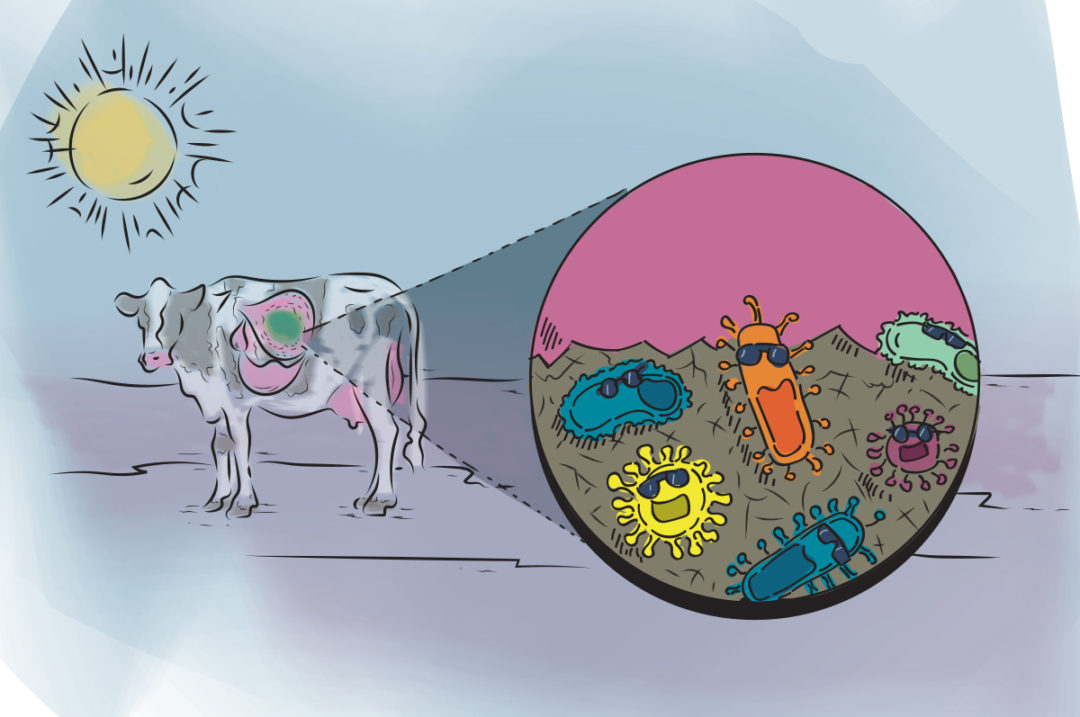Heat stress is an obstacle most dairy producers can expect year after year. As cows try to maintain body temperature and stay cool, dry matter intake (DMI) and milk output often decline. The impact of heat stress is cumulative. One event may be easy for a cow to bounce back from, but over time, repeated bouts take longer recovery and hinder profitability. Nutrition is a valuable tool to help mitigate the effects of heat stress and maintain herd productivity.
Heat stress is a threat to rumen health – which is why it often slashes herd productivity. As the cow struggles to dispel heat, blood flow is diverted away from the digestive tract to the skin for more effective heat dissipation. Not only does this impact nutrient absorption, but it also pulls nutrients away from key functions, such as reproduction and lactation, which can increase days open and lower milk output. With energy being redirected from those key functions, health and body condition can be harder to manage.
Maintaining body condition is key to your herd’s ability to withstand heat stress and have a productive lactation. With the correct body condition:
- More energy is available and can be partitioned into key metabolic functions.
- Cows will have a more successful start to lactation with the correct body condition.
- Pregnancy rate will improve.
- Cows can better avoid the risk of metabolic disorders, such as ketosis.
Rumen-first nutrition for steady body condition
Tailoring your nutritional strategy to benefit the rumen microbiome equips cows to better maintain body condition and keep performing through hotter temperatures. Increasing nutrient concentration in the ration can help offset decreased DMI. Additionally, you can focus on feeding the rumen microbes directly with branched-chain volatile fatty acids. When rumen microbes are fed first, feedstuff digestibility is improved, thus allowing the cow to require less DMI for improved energy-corrected milk and greater feed efficiency. With this nutritional strategy, you can ensure cows maintain productivity and require fewer inputs, protecting your profitability.
Focusing on the rumen microbes also helps the cow maintain her correct body condition throughout key points of lactation for optimal performance. Cows fed with proper rumen-focused nutrition lose less weight in early lactation, only losing 1.2% of bodyweight compared with 3.4%. This means more energy is available for productive purposes with less reliance on energy stores, thus cows are at less risk for metabolic disorders and are better able to handle heat stress.
To make sure this nutritional strategy works, herd management is an important focus area. Prioritizing cow comfort by making sure they have an appropriate lying surface, shade, working sprinklers, airflow and fan placement is essential. Providing cows with multiple ways to stay cool will contribute to the success of your nutrition program.
Implement a proactive nutrition strategy
As you prepare for warmer temperatures, assess the nutrients that are available to your herd. Look for opportunities to fill organic trace mineral and branched-chain volatile fatty acid gaps to decrease heat stress, and maintain the body condition, foot health and reproductive performance in your herd. You also can evaluate environmental conditions and cow comfort to see if these present any barriers to your nutrition strategy. Work with an expert to help analyze your herd’s needs and implement a rumen-first nutrition strategy.
By feeding the rumen microbiome, you can protect your herd from heat stress and maintain better body condition for a successful, more profitable lactation period.







